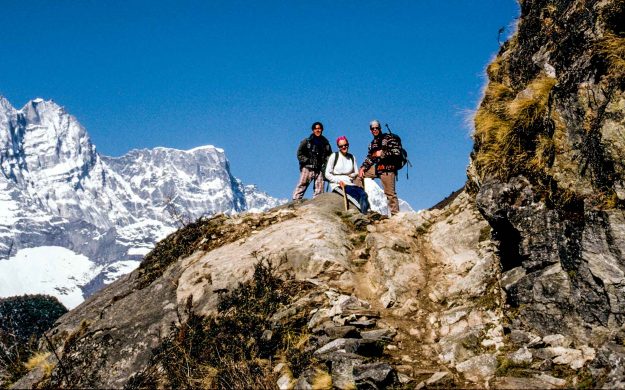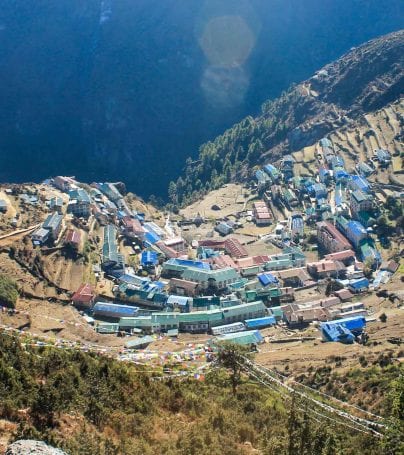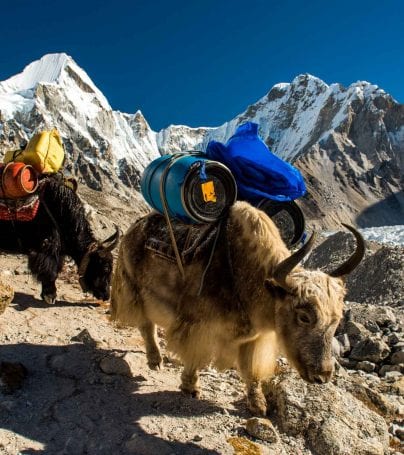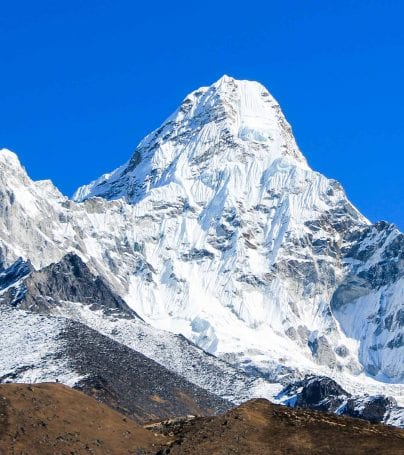Sagarmatha National Park Adventure Tours
Sagarmatha National Park is a protected area in the Himalayas of eastern Nepal containing the southern half of Mount Everest. The park was created on July 19, 1976, and was inscribed as a Natural World Heritage Site in 1979. Sagarmāthā is a Sanskrit word, from sagar = “sky” (not to be confused with “sea/ocean”) and māthā = “forehead” or “head”, and is the modern Nepali name for Mount Everest. The park encompasses an area of 1,148 km2 (443 sq mi) in the Solukhumbu District and ranges in elevation from 2,845 m (9,334 ft) at Jorsalle to 8,848 m (29,029 ft) at the summit of Mount Everest. Barren land above 5,000 m (16,000 ft) comprises 69% of the park while 28% is grazing land and the remaining 3% is forested. Most of the park area is very rugged and steep, with its terrain cut by deep rivers and glaciers. Unlike other parks, this park can be divided into four climate zones because of the rising altitude. The climatic zones include a forested lower zone, a zone of alpine scrub, the upper alpine zone which includes the upper limit of vegetation growth, and the Arctic zone where no plants can grow. The types of plants and animals that are found in the park depend on the altitude. The park contains the upper watershed of the Dudh Kosi river basin system.
The park’s visitor center is located at the top of a hill in Namche Bazaar, also where a company of the Nepal Army is stationed for protecting the park. The park’s southern entrance is a few hundred meters north of Monzo at 2,835 m (9,301 ft), a one day hike from Lukla.
In the lower forested zone, birch, juniper, blue pines, firs, bamboo, and rhododendron grow. Above this zone, all vegetation is found to be dwarf or shrubs. As the altitude increases, plant life is restricted to lichens and mosses. Plants cease to grow at about 5,750 m (18,860 ft) because this is the permanent snow line in the Himalayas.
Forests of pine and hemlock cover the lower elevations of the national park. At elevations of around 3,500 m (11,500 ft) and above, forests of silver fir, birch, rhododendron, and juniper trees are found. The forests provide habitat to at least 118 species of birds, including Himalayan Monal, Blood pheasant, Red-billed chough, and yellow-billed chough. Sagarmāthā National Park is also home to a number of rare mammal species, including musk deer, snow leopard, Himalayan black bear, and red panda. Himalayan thars, langur monkeys, martens, and Himalayan wolves are also found in the park.
The partial pressure of oxygen falls with altitude. Therefore, the animals that are found here are adapted to living on less oxygen and cold temperatures. They have thick coats to retain body heat. Some of them have shortened limbs to prevent loss of body heat. The Himalayan bears go into hibernation in caves during the winter when there is no food available.
Customize Your Dream Adventure
We are here to help craft tailor-made adventures for individuals, couples, families, and groups of explorers.







